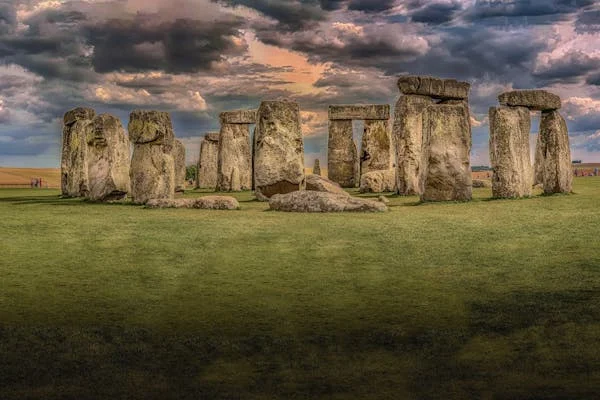Introduction
Uncuymaza is a cultural and agricultural practice with deep roots in the Andean civilizations. It represents not only a farming technique but a way of life that connects the people of the Andean mountains with nature, agriculture, and spirituality. The practice passed down for generations, is more than just about cultivating land; it’s about preserving identity, culture, and the very essence of life in the high-altitude regions of South America.
In this article, we will explore the rich history, significance, and modern-day relevance of Uncuymaza. From its agricultural practices to its connection with community rituals, Uncuymaza is an essential thread in the fabric of Andean culture.
The Roots of Uncuymaza: A Historical Overview
Origins in the Ancient Andes
Uncuymaza’s origins can be traced back to the ancient civilizations of the Andes, particularly the Inca and pre-Inca cultures. The term “Uncuymaza” itself comes from the Quechua language, the language of the Inca Empire, and remains prevalent in the Andean regions today.
The Inca Empire, known for its advanced agricultural systems, built terraces, irrigation systems, and farming technologies that allowed them to sustain large populations in the harsh mountain environment. These practices were closely tied to the agricultural calendar, which was essential for the survival of the civilization.
Uncuymaza, in this context, was more than a farming practice it was a ritualistic event tied to the agricultural cycles that included planting, harvesting, and honoring the land. The Andean people believed that their success in farming was not just a matter of skill but also the result of spiritual harmony with the land and its deities.
The Inca Agricultural Calendar
The Inca civilization used an agricultural calendar based on the lunar cycles and the natural rhythms of the environment. Uncuymaza was conducted as part of these seasonal activities, often timed to coincide with solstices and other celestial events. During the planting season, the rituals would involve offerings to Pachamama (Mother Earth) to ensure a bountiful harvest.
In these practices, people would perform ceremonies, use ceremonial tools, and dress in traditional attire, all of which were considered necessary to invite prosperity and divine favor. The community would gather to offer prayers, share stories, and engage in celebratory feasts, ensuring that everyone participated in the act of communion with the earth.
Cultural Significance of Uncuymaza
A Ritual of Connection
Uncuymaza holds a central place in Andean spirituality. It is not just a matter of agriculture; it is a ritualistic process of ensuring that the land continues to provide for future generations. The concept of “ayni,” which is a fundamental part of Andean culture, is embedded in Uncuymaza. Ayni is the principle of reciprocity the idea that what is given to the earth will return tenfold.
In traditional Andean beliefs, the earth is viewed as a living entity, capable of both nurturing and retaliating. As such, the rituals associated with Uncuymaza are designed to build a respectful relationship between humans and the land. Each season is treated with reverence, and agricultural activities are marked by spiritual observances and ceremonial practices.
Community-Centered Practices
Uncuymaza is not just an individual or family practice; it is a community event. In Andean villages, the practice often involves the collective effort of the entire community. People come together to share knowledge, tools, and labor. During planting seasons, farmers, or “arariwa,” work in unison, following the traditions of their ancestors, ensuring that the land is worked with respect and harmony.
The unity of the community during Uncuymaza fosters a sense of solidarity and mutual care, with everyone supporting each other through the agricultural cycles. It is a time for passing down oral traditions, teaching the younger generation about their heritage, and strengthening the bonds between individuals and their ancestors.
The Role of Spirituality in Uncuymaza
The spiritual aspect of Uncuymaza is undeniably important. The Andean worldview incorporates the belief in an interconnected world where humans, nature, and the spiritual realm coexist and communicate with each other. The practice of Uncuymaza is thus not just about tilling the soil; it is about respecting the sacredness of the earth.
Ceremonial tools, including sacred objects like clay pots and ceremonial knives, are used in the rituals. Offerings to Pachamama, such as coca leaves, grains, and flowers, are common during Uncuymaza ceremonies. These offerings are believed to sustain the relationship between the land and the people, ensuring that the earth remains fertile for future generations.
Modern-Day Relevance of Uncuymaza
Preservation of Traditions in a Changing World
While the world around the Andean people has changed, the practice of Uncuymaza has endured. The arrival of modern agricultural techniques and globalization has not diminished the importance of Uncuymaza. Many Andean farmers today still rely on these ancient practices, integrating them into their contemporary agricultural work.
The preservation of Uncuymaza is a matter of cultural pride. In recent years, there has been a revival of interest in traditional agricultural practices, particularly among younger generations. As modern agriculture becomes more industrialized, there is a push to return to more sustainable, earth-conscious methods of farming methods that mirror the wisdom passed down through generations of Andean farmers.
Uncuymaza and Sustainability
Uncuymaza offers valuable insights into sustainable agricultural practices. The ancient Andean civilizations developed techniques that allowed them to cultivate crops in difficult terrain without depleting the land. The concept of working with the land, rather than exploiting it, is an approach that is gaining traction in today’s environmentally conscious world.
Farmers today are turning back to techniques like crop rotation, terracing, and organic farming practices that were part of Uncuymaza long before they became popular in modern farming circles. These methods are not only environmentally friendly but also economically viable, particularly for small-scale farmers who want to ensure the long-term fertility of their land.
Uncuymaza in the Context of Globalization
With the rise of tourism in the Andean regions, many communities have found new ways to share their culture and traditions with the world. Uncuymaza, with its deep spiritual roots and rich history, is becoming an important cultural export. Through cultural exchange programs, traditional festivals, and agro-tourism, tourists from around the globe have the chance to experience Uncuymaza firsthand.
These events not only educate outsiders about Andean culture but also provide a means for local communities to preserve their customs. By participating in Uncuymaza, tourists gain a deeper understanding of the Andean worldview and the significance of agriculture in the daily lives of Andean people.
Conclusion
Uncuymaza is more than just an agricultural practice; it is a symbol of the connection between people, nature, and spirituality. From its origins in the Inca Empire to its modern-day practice in Andean communities, Uncuymaza remains a vital part of Andean life. It embodies the values of reciprocity, respect for the earth, and community solidarity.
As the world faces increasing challenges related to climate change, sustainability, and cultural preservation, Uncuymaza offers valuable lessons. The practices of the Andean people grounded in respect for the land and a deep sense of interconnectedness can inspire us all to adopt more sustainable ways of living.
The future of Uncuymaza lies in its ability to adapt and evolve while retaining its cultural essence. For the Andean people, it is not just a tradition of the past, but a living practice that continues to shape their identity and ensure their future. Through Uncuymaza, they honor their ancestors, protect their environment, and pass on a legacy of wisdom and resilience to the next generation.







